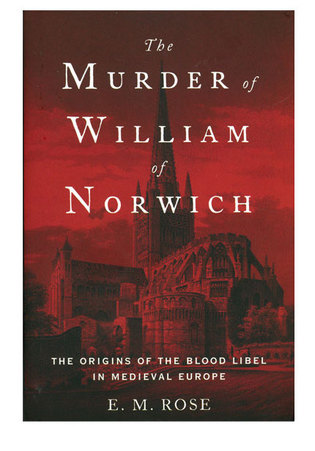 loading
loading
Reviews: November/December 2015 View full imageThe Murder of William of Norwich: The Origins of the Blood Libel in Medieval Europe Mark Oppenheimer ’96, ’03PhD, writes the Beliefs column for the New York Times. The libel assumed its archetypal form after 1144, when the corpse of William, a young leatherworker from Norwich, in East Anglia, was found mutilated in the woods. An unfounded rumor spread that he had died at the hands of a Jew, and six years later a Benedictine monk fixed that notion in a fantastical book—The Life and Passion of William of Norwich, the urtext for later accusations of Jewish ritual murder across Europe. Rose’s book will, with its zippy narrative and clear prose, engage the reader coming to this gruesome topic for the first time. The book’s inspection of four cases of the blood libel in Britain and France reiterates arguments familiar to scholars—such as that the libel proved useful in extorting money from Jews who would pay ransom for a fellow Jew arrested on trumped-up charges. But Rose also shows how its growth was fueled by European political intrigues. Time and again, clergy and nobility could consolidate power by publicizing a blood libel case, rallying fellow Christians against a common, nefarious enemy. The book moves the blood libel out of Jewish history and into European history, a grand tale in which the Jew plays a relatively smaller, much abused role.
The comment period has expired.
|
|